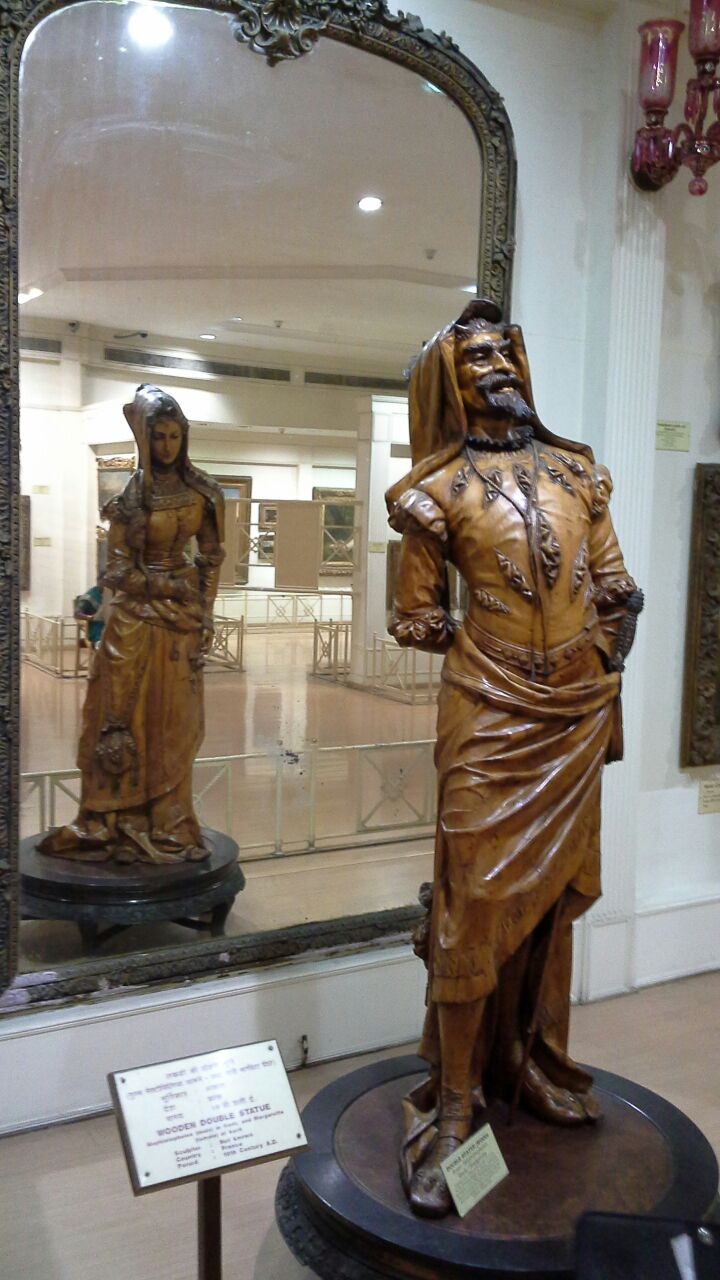Amazing “Double Sculpture”

A mesmerizing wood artwork can be found hidden on the 2nd floor of an Indian gallery. A man stands looking into the space with his haughty chest puffed out. We notice a quiet woman with her head lowered in the mirror behind him. Both figures are depicted in this amazing double sculpture on different sides of the same wooden block. When a mirror is placed in front of the female figure, giving the impression that the woman is standing behind the man, the sculpture’s theatrical tableau comes to life. She examines the floor instead of daring to look at him. Fans of literature will readily get what these contrasted personalities stand for. The captivating pair, also called as Mephistopheles and Margaretta, A Double Sculpture, are unquestionably the main characters in Goethe’s well-known Faust.
Faust is a classic conflict between good and evil that was first printed in 1808. The masculine character is unmistakably Mephistopheles, sometimes known as the devil, with his thick mustache and grin of the devil. Faust enters into his first blood pact with the devil, which results in murder and eternal punishment when he finds love with Gretchen, also called as Margaretta. It’s a typical tragic story in which Faust pursues his selfish goals by following the devil, only to learn his error of judgment much too late. The Faust legend predates Goethe by several centuries, and has since been the topic of a large number of books, poetry, dramas, musical works, and artistic works.
This specific statue, which can be found in Hyderabad, India’s Salar Jung Gallery, is fascinating because the artist was able to convey the story in an effective and moving manner. It’s one of the works of art in the collection that has been shot the most; it was produced in the 19th century by an unidentified French artist. Its presence at one of the biggest museums around the world speaks to its significance.
These two figures, which were carved from a single sycamore log, represent the contradictory aspects of humanity as revealed in Faust. The evil Mephistopheles, who instantly incites fear merely by gazing into his cunning eyes, is on one side of the room. On the other hand, Gretchen’s decision to avoid looking up at the devil could be interpreted as a metaphor for the events to follow. Gretchen turns away from evil, but in his search for happiness and limitless learning, Faust headed straight toward it.
Through the use of one piece of wood, this amazing dual artwork tells the story of Faust. There is a haughty male standing to one side, and a submissive woman with her head slowly lowered.

